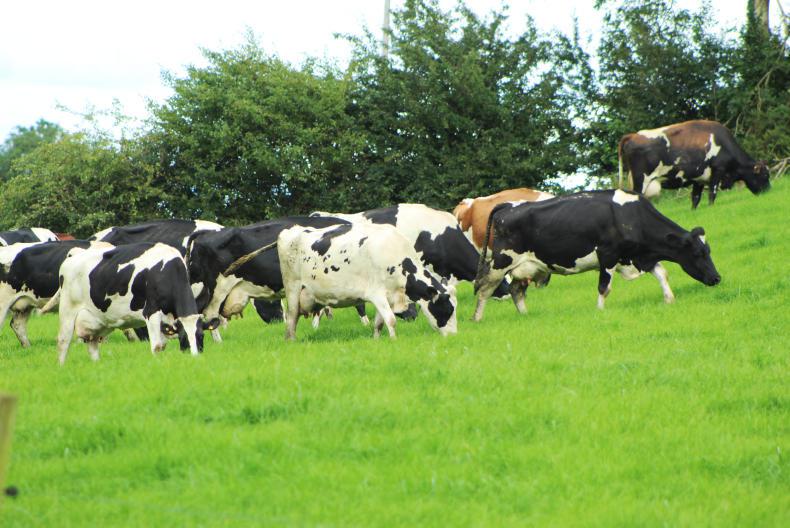US agriculture is at a critical juncture. Producers have endured years of low commodity prices and the destructive effects of trade wars, and severe weather events – from floods to fires – have become more frequent and damaging.
Now, a global pandemic is further testing our agricultural systems. These concurrent crises have focused the attention of policymakers and the public on underlying structural issues that the US agricultural sector will need to address in the decade ahead.
Since early 2017, shifts in US trade policy have had a major impact on the US agriculture sector.
At the end of 2016, the United States had just finished negotiating the Trans-Pacific Partnership Trade Agreement (TPP) and was focused on deepening economic ties to create a counterweight to China’s influence in the Asia-Pacific region. Estimated net income gains for US agriculture from the TPP were $4.4bn annually.
Trade wars
Today, the US is locked in a bilateral trade war with China, has imposed tariffs on steel and aluminium imports and has retreated from the TPP.
These measures have subjected US agricultural products to retaliatory tariffs in multiple markets, raised costs for essential agricultural inputs and made farmers dependent on government bailout programmes.
In 2018, US agricultural exports to China declined by nearly $10bn. The USDA’s economic research service estimates that in 2019, 40% of US farm income came from federal aid programmes, including payments to ease the economic harm from the trade wars.
Meanwhile, many of our competitors, including the EU and members of the TPP, are forging new trade deals, expanding their influence while eroding US competitiveness around the globe.
The pandemic and its resulting economic crises raised public awareness of problems the agricultural community has been grappling with for years
Against this challenging backdrop, 2020 was ushered in by COVID-19.
Almost overnight, the pandemic and its resulting economic crises raised public awareness of problems the agricultural community has been grappling with for years, reinforcing their urgency.
We are truly at a point of inflection; the choices we make in the next few years about the supply and treatment of farm labour, supporting smaller farms and addressing concentration in agriculture, opening international markets and addressing climate change, will have a dramatic impact on the structure and sustainability of the sector for decades to come.
Climate change
In July of this year, Democrat and Republican leaders in the Senate introduced the growing climate solutions act.
The legislation charges USDA with providing technical assistance to farmers to adopt climate-smart agricultural practices and to establish measurement, verification and auditing procedures to ensure the practices are effective and documented.
The goal is to allow farmers to participate in private, voluntary markets for carbon credits – creating a new income stream for a financially stressed sector.
This act reflects a serious shift and important momentum supporting agriculture’s role in mitigating climate change, which will continue regardless of the election outcome.
The practices being promoted contribute to biodiversity conservation and soil health, improving climate resilience and reducing farmers’ risk
While there is still debate about the effectiveness and permanence of soil carbon sequestration, supporters of the bill note that regenerative practices are still a good investment.
The practices being promoted contribute to biodiversity conservation and soil health, improving climate resilience and reducing farmers’ risk, even if climate mitigation benefits may be smaller than anticipated.
The emphasis on private, voluntary markets in the bill is important here. While there is bipartisan agreement that agriculture has a role to play on climate, there is no consensus around a stronger government role in mitigating climate change.
If the Trump administration wins a second term, expect continued research and technical assistance from USDA for farmers who wish to participate in private carbon initiatives. A more co-ordinated national climate policy, however, is unlikely.
National climate policy
A Biden administration, on the other hand, particularly if accompanied by a Democratic majority in the Senate, promises a swift US return to the Paris Climate Agreement, and a comprehensive national climate policy that would create specific targets for the United States.
An economy-wide commitment could build domestic demand, as well as the income potential, for farmers’ carbon credits.
Strong federal leadership will be needed to ensure international recognition and alignment with US carbon markets and verification programmes.
US exporters will need to ensure that any carbon credits they use to comply with these other countries’ carbon mandates are recognised and accepted by those governments.
As a major agricultural exporter, the United States cannot afford to develop a policy without clear international alignment.
Agriculture cannot mitigate climate change acting alone – a global, economy-wide effort will be needed
While US agriculture is currently focused on the opportunity for farmers to be compensated for their good practices, farmers remain incredibly vulnerable to the effects of climate change, including droughts, floods and other extreme weather events, as well as the spread of pests and disease into new regions.
Agriculture cannot mitigate climate change acting alone – a global, economy-wide effort will be needed to combat these serious challenges to food production.
Supporting small- and mid-sized farms
Over the past decade, the US agriculture sector has seen multiple mergers and acquisitions among seed and input providers and meat and dairy processors.
Farmers have expressed growing concerns about dwindling choices and lack of transparency when purchasing inputs or marketing their crops and livestock.
When COVID-19 outbreaks closed meat-packing plants, it was no longer just farmers, but everyday grocery shoppers who became aware of the size and scale of these companies, as the closure of a single facility created shortages for consumers in multiple states.
In the last few months, the Department of Justice announced the indictment of poultry company CEOs for price-fixing and USDA announced an investigation into beef pricing practices, as the gulf between cattle prices and the price of beef continued to grow.
In March 2020, the Farm Bureau reported a 23% rise in farm bankruptcies over last the past year, even before the effects of the pandemic were factored in, with small and mid-sized operations hardest hit.
Without specific, focused efforts to address the needs of small- and mid-size farmers, we will see their numbers continue to dwindle
The average age of a US farmer is nearly 60, and while there is renewed interest in careers in food and farming, the high cost of land and equipment create huge barriers to entry for the next generation.
Without specific, focused efforts to address the needs of small- and mid-size farmers, we will see their numbers continue to dwindle, with ripple effects throughout rural communities.
Biden has promised to focus on small and mid-size producers, pledging stronger enforcement of anti-trust laws throughout the agricultural sector, and a renewed emphasis on research and technical assistance to help smaller operations diversify their crops and income, including ecosystem services markets, as mentioned previously.
Both Biden and his running mate Senator Kamala Harris have outlined plans to assist producers in building local, regional and value-added supply chains to more directly link farmers to consumers, and proposed tax incentives for businesses that create jobs in rural communities.
There should be ample opportunity for public-private partnerships here, as food and beverage companies are implementing their own, longer-term partnership programmes with farmers to encourage sustainability, and ensure the traceability and supply of key ingredients consumers demand.
An ample, safe workforce
A shortage of skilled farm labour has long been a concern for US agriculture, as have the working conditions and treatment of those workers.
Restrictions on the movement of seasonal labour during the COVID-19 crisis left many crops unharvested, exacerbating an already dire labour supply problem.
Widespread media coverage of COVID-19 outbreaks among farm and food processing workers placed a larger, public spotlight on the difficult working conditions in fields and processing plants, and policies such as unpaid sick leave, that facilitated the spread of disease.
This coverage, coupled with the current momentum to address racial and social injustice, has created a more informed consumer that is demanding change from producers and from government.
The future success of our agricultural sector depends on finding a better balance for agricultural labour
The future success of our agricultural sector depends on finding a better balance for agricultural labour – where we can recruit and retain skilled workers, and where they are properly protected and compensated.
The Trump administration has significantly tightened immigration policies and has been criticised for its slowness to respond to outbreaks in food facilities, waiting weeks after multiple plants were affected to issue health guidelines for COVID-19 prevention, while using emergency authorities to keep meat-packing plants open.
The administration is providing technical assistance to meat and poultry plants on COVID-19 prevention, but has stated that it does not intend to issue mandatory standards or focus on enforcement.
A Biden administration would take a more aggressive approach on both fronts. It would propose reforms to visa programmes for seasonal workers that would make them easier for employers and workers to use, reducing incentives to go outside the system, where workers lack recourse if wage or safety standards are not met.
Rather than relying on voluntary guidance for worker safety, expect a Biden government to issue binding standards for worker protection, and to partner with unions to verify that disease prevention measures are implemented.
It is also worth watching corporate governance in this space.
For public companies, outbreaks of COVID-19 among workers may spur additional scrutiny from institutional investors, who may question whether employment policies create unnecessary risk to the operation or reputation of the company or may fail to meet their environment, social and governance investing criteria.
Reliable, open markets
While US farmers and ranchers have been on the losing end of recent trade moves, US agriculture should not expect an abrupt shift in overall trade policy if the administration changes.
Efforts to get tough on China, for example, are immensely popular on both sides of the aisle. What we can expect is a significant change in tactics, although implementing that change may take time.
Both Trump and Biden have emphasised manufacturing, not agriculture, in their trade policy, particularly in the wake of COVID-19, where policymakers bemoaned US dependence on imports of PPE and other medical equipment.
Both candidates have stressed the need to build US manufacturing in these and other critical industries.
Biden’s major critique of Trump’s trade policy is its nationalistic, go-it-alone approach.
Look for a Biden administration to seek to reset our trade talks with China, moving away from a focus on tariffs, engaging like-minded countries to apply joint pressure and more clearly aligning our trade and foreign policy priorities.
However, this reset will take time to implement, as a new administration will need to assess the relationship with China, and relationships with many of our allies are frayed.
Our competitors are moving quickly to form new alliances
The Biden campaign has clearly acknowledged that farmers have been hurt by retaliatory tariffs and a lack of focus on new markets, and that government payouts are not a substitute for exports.
While we should not expect new trade deals to be launched immediately, they will look to craft a trade policy that provides new opportunities for exporters, as well as focusing on workers and US manufacturers.
Our competitors are moving quickly to form new alliances and increase their global market share; restoring and expanding opportunities for US exports of commodities, services, and even carbon, is essential for the future of the agriculture sector.
The food supply challenge
Many others have written about how, in the coming decade, we will need to produce more with fewer resources, reduce waste, improve nutrition and combat hunger.
I am hopeful that careful co-ordinated policy responses to the environmental, labour and economic challenges we face will allow us not only to produce abundant food and fibre, but also nourish farming families, protect workers, mitigate climate change and strengthen global trade.
*Darci Vetter is vice-chair for agriculture, food and trade at Edelman, North America. She was formerly chief agricultural negotiator for the Office of the United States Trade Representative in the Obama administration.
The trade war with China has cost US agricultural exports dearly in recent years, hitting farm incomes and increasing dependence on federal aid programmes. The US has significant choices to make over the next few years regarding farm labour, support for smaller farms, climate change and international markets. A more informed US consumer is demanding change and is increasingly interested in production, processing and retail supply chains.
US agriculture is at a critical juncture. Producers have endured years of low commodity prices and the destructive effects of trade wars, and severe weather events – from floods to fires – have become more frequent and damaging.
Now, a global pandemic is further testing our agricultural systems. These concurrent crises have focused the attention of policymakers and the public on underlying structural issues that the US agricultural sector will need to address in the decade ahead.
Since early 2017, shifts in US trade policy have had a major impact on the US agriculture sector.
At the end of 2016, the United States had just finished negotiating the Trans-Pacific Partnership Trade Agreement (TPP) and was focused on deepening economic ties to create a counterweight to China’s influence in the Asia-Pacific region. Estimated net income gains for US agriculture from the TPP were $4.4bn annually.
Trade wars
Today, the US is locked in a bilateral trade war with China, has imposed tariffs on steel and aluminium imports and has retreated from the TPP.
These measures have subjected US agricultural products to retaliatory tariffs in multiple markets, raised costs for essential agricultural inputs and made farmers dependent on government bailout programmes.
In 2018, US agricultural exports to China declined by nearly $10bn. The USDA’s economic research service estimates that in 2019, 40% of US farm income came from federal aid programmes, including payments to ease the economic harm from the trade wars.
Meanwhile, many of our competitors, including the EU and members of the TPP, are forging new trade deals, expanding their influence while eroding US competitiveness around the globe.
The pandemic and its resulting economic crises raised public awareness of problems the agricultural community has been grappling with for years
Against this challenging backdrop, 2020 was ushered in by COVID-19.
Almost overnight, the pandemic and its resulting economic crises raised public awareness of problems the agricultural community has been grappling with for years, reinforcing their urgency.
We are truly at a point of inflection; the choices we make in the next few years about the supply and treatment of farm labour, supporting smaller farms and addressing concentration in agriculture, opening international markets and addressing climate change, will have a dramatic impact on the structure and sustainability of the sector for decades to come.
Climate change
In July of this year, Democrat and Republican leaders in the Senate introduced the growing climate solutions act.
The legislation charges USDA with providing technical assistance to farmers to adopt climate-smart agricultural practices and to establish measurement, verification and auditing procedures to ensure the practices are effective and documented.
The goal is to allow farmers to participate in private, voluntary markets for carbon credits – creating a new income stream for a financially stressed sector.
This act reflects a serious shift and important momentum supporting agriculture’s role in mitigating climate change, which will continue regardless of the election outcome.
The practices being promoted contribute to biodiversity conservation and soil health, improving climate resilience and reducing farmers’ risk
While there is still debate about the effectiveness and permanence of soil carbon sequestration, supporters of the bill note that regenerative practices are still a good investment.
The practices being promoted contribute to biodiversity conservation and soil health, improving climate resilience and reducing farmers’ risk, even if climate mitigation benefits may be smaller than anticipated.
The emphasis on private, voluntary markets in the bill is important here. While there is bipartisan agreement that agriculture has a role to play on climate, there is no consensus around a stronger government role in mitigating climate change.
If the Trump administration wins a second term, expect continued research and technical assistance from USDA for farmers who wish to participate in private carbon initiatives. A more co-ordinated national climate policy, however, is unlikely.
National climate policy
A Biden administration, on the other hand, particularly if accompanied by a Democratic majority in the Senate, promises a swift US return to the Paris Climate Agreement, and a comprehensive national climate policy that would create specific targets for the United States.
An economy-wide commitment could build domestic demand, as well as the income potential, for farmers’ carbon credits.
Strong federal leadership will be needed to ensure international recognition and alignment with US carbon markets and verification programmes.
US exporters will need to ensure that any carbon credits they use to comply with these other countries’ carbon mandates are recognised and accepted by those governments.
As a major agricultural exporter, the United States cannot afford to develop a policy without clear international alignment.
Agriculture cannot mitigate climate change acting alone – a global, economy-wide effort will be needed
While US agriculture is currently focused on the opportunity for farmers to be compensated for their good practices, farmers remain incredibly vulnerable to the effects of climate change, including droughts, floods and other extreme weather events, as well as the spread of pests and disease into new regions.
Agriculture cannot mitigate climate change acting alone – a global, economy-wide effort will be needed to combat these serious challenges to food production.
Supporting small- and mid-sized farms
Over the past decade, the US agriculture sector has seen multiple mergers and acquisitions among seed and input providers and meat and dairy processors.
Farmers have expressed growing concerns about dwindling choices and lack of transparency when purchasing inputs or marketing their crops and livestock.
When COVID-19 outbreaks closed meat-packing plants, it was no longer just farmers, but everyday grocery shoppers who became aware of the size and scale of these companies, as the closure of a single facility created shortages for consumers in multiple states.
In the last few months, the Department of Justice announced the indictment of poultry company CEOs for price-fixing and USDA announced an investigation into beef pricing practices, as the gulf between cattle prices and the price of beef continued to grow.
In March 2020, the Farm Bureau reported a 23% rise in farm bankruptcies over last the past year, even before the effects of the pandemic were factored in, with small and mid-sized operations hardest hit.
Without specific, focused efforts to address the needs of small- and mid-size farmers, we will see their numbers continue to dwindle
The average age of a US farmer is nearly 60, and while there is renewed interest in careers in food and farming, the high cost of land and equipment create huge barriers to entry for the next generation.
Without specific, focused efforts to address the needs of small- and mid-size farmers, we will see their numbers continue to dwindle, with ripple effects throughout rural communities.
Biden has promised to focus on small and mid-size producers, pledging stronger enforcement of anti-trust laws throughout the agricultural sector, and a renewed emphasis on research and technical assistance to help smaller operations diversify their crops and income, including ecosystem services markets, as mentioned previously.
Both Biden and his running mate Senator Kamala Harris have outlined plans to assist producers in building local, regional and value-added supply chains to more directly link farmers to consumers, and proposed tax incentives for businesses that create jobs in rural communities.
There should be ample opportunity for public-private partnerships here, as food and beverage companies are implementing their own, longer-term partnership programmes with farmers to encourage sustainability, and ensure the traceability and supply of key ingredients consumers demand.
An ample, safe workforce
A shortage of skilled farm labour has long been a concern for US agriculture, as have the working conditions and treatment of those workers.
Restrictions on the movement of seasonal labour during the COVID-19 crisis left many crops unharvested, exacerbating an already dire labour supply problem.
Widespread media coverage of COVID-19 outbreaks among farm and food processing workers placed a larger, public spotlight on the difficult working conditions in fields and processing plants, and policies such as unpaid sick leave, that facilitated the spread of disease.
This coverage, coupled with the current momentum to address racial and social injustice, has created a more informed consumer that is demanding change from producers and from government.
The future success of our agricultural sector depends on finding a better balance for agricultural labour
The future success of our agricultural sector depends on finding a better balance for agricultural labour – where we can recruit and retain skilled workers, and where they are properly protected and compensated.
The Trump administration has significantly tightened immigration policies and has been criticised for its slowness to respond to outbreaks in food facilities, waiting weeks after multiple plants were affected to issue health guidelines for COVID-19 prevention, while using emergency authorities to keep meat-packing plants open.
The administration is providing technical assistance to meat and poultry plants on COVID-19 prevention, but has stated that it does not intend to issue mandatory standards or focus on enforcement.
A Biden administration would take a more aggressive approach on both fronts. It would propose reforms to visa programmes for seasonal workers that would make them easier for employers and workers to use, reducing incentives to go outside the system, where workers lack recourse if wage or safety standards are not met.
Rather than relying on voluntary guidance for worker safety, expect a Biden government to issue binding standards for worker protection, and to partner with unions to verify that disease prevention measures are implemented.
It is also worth watching corporate governance in this space.
For public companies, outbreaks of COVID-19 among workers may spur additional scrutiny from institutional investors, who may question whether employment policies create unnecessary risk to the operation or reputation of the company or may fail to meet their environment, social and governance investing criteria.
Reliable, open markets
While US farmers and ranchers have been on the losing end of recent trade moves, US agriculture should not expect an abrupt shift in overall trade policy if the administration changes.
Efforts to get tough on China, for example, are immensely popular on both sides of the aisle. What we can expect is a significant change in tactics, although implementing that change may take time.
Both Trump and Biden have emphasised manufacturing, not agriculture, in their trade policy, particularly in the wake of COVID-19, where policymakers bemoaned US dependence on imports of PPE and other medical equipment.
Both candidates have stressed the need to build US manufacturing in these and other critical industries.
Biden’s major critique of Trump’s trade policy is its nationalistic, go-it-alone approach.
Look for a Biden administration to seek to reset our trade talks with China, moving away from a focus on tariffs, engaging like-minded countries to apply joint pressure and more clearly aligning our trade and foreign policy priorities.
However, this reset will take time to implement, as a new administration will need to assess the relationship with China, and relationships with many of our allies are frayed.
Our competitors are moving quickly to form new alliances
The Biden campaign has clearly acknowledged that farmers have been hurt by retaliatory tariffs and a lack of focus on new markets, and that government payouts are not a substitute for exports.
While we should not expect new trade deals to be launched immediately, they will look to craft a trade policy that provides new opportunities for exporters, as well as focusing on workers and US manufacturers.
Our competitors are moving quickly to form new alliances and increase their global market share; restoring and expanding opportunities for US exports of commodities, services, and even carbon, is essential for the future of the agriculture sector.
The food supply challenge
Many others have written about how, in the coming decade, we will need to produce more with fewer resources, reduce waste, improve nutrition and combat hunger.
I am hopeful that careful co-ordinated policy responses to the environmental, labour and economic challenges we face will allow us not only to produce abundant food and fibre, but also nourish farming families, protect workers, mitigate climate change and strengthen global trade.
*Darci Vetter is vice-chair for agriculture, food and trade at Edelman, North America. She was formerly chief agricultural negotiator for the Office of the United States Trade Representative in the Obama administration.
The trade war with China has cost US agricultural exports dearly in recent years, hitting farm incomes and increasing dependence on federal aid programmes. The US has significant choices to make over the next few years regarding farm labour, support for smaller farms, climate change and international markets. A more informed US consumer is demanding change and is increasingly interested in production, processing and retail supply chains. 









SHARING OPTIONS